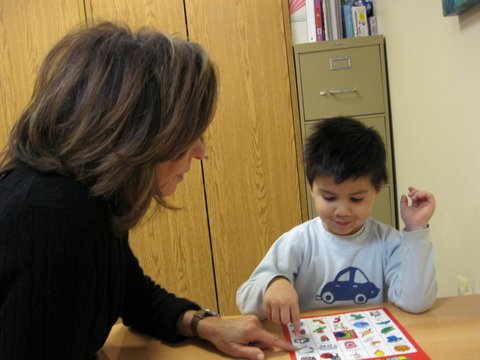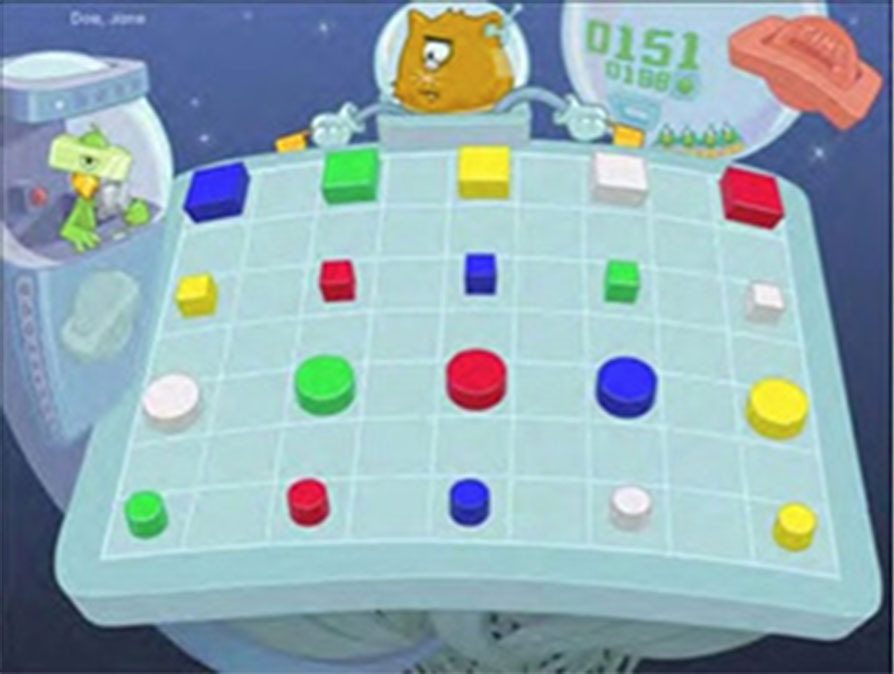Auditory Processing Disorders (APD)
Auditory Processing is an inefficiency of the auditory mechanism to integrate auditory cues, to recognize, discriminate and process auditory stimuli, particularly in difficult listening situations.
Children with auditory processing disorders have problems understanding spoken language. They may have difficulty comprehending lengthy or complex instructions, understanding when someone speaks rapidly or comprehending speech in the presence of background noise (i.e., classroom).
View our other approaches:
- Apraxia of Speech (CAS)
- Articulation Disorders
- Auditory Processing Disorders (APD)
- Autism Spectrum Disorder (ASD)
- Deviate Swallow (Tongue Thrust)
- Executive Functions Deficits
- Expressive-Receptive Language Delays/Disorders
- Feeding Disorders
- Fluency (Stuttering)
- Oral Motor Disorders
- Phonological Disorders
- Social (Pragmatic) Communication
- Voice and Resonance Disorders
 Our treatment approach to Auditory Processing begins with a child undergoing a full auditory processing evaluation by a licensed audiologist.
Our treatment approach to Auditory Processing begins with a child undergoing a full auditory processing evaluation by a licensed audiologist.
Upon completion, our speech-language pathologist conducts a comprehensive speech-language evaluation. Auditory processing and language goals are determined based on these results. Our therapy approach includes one-to-one treatment, as well as carryover in the home and school environments.
The Building Blocks of Auditory Processing, developed by Lois Kam Heymann, a leading authority in auditory processing disorders. is a skills hierarchy for assessing areas of auditory processing and language. The Building Blocks hierarchy provides a framework from which the speech-language pathologist will develop an individualized treatment plan for the child. The building blocks, listed according to developmental sequence, are:

Auditory Attention:
The ability to attend to auditory signals. Includes the ability to maintain purposeful auditory focus to complete a task. For example, listening to a book during story time.
Figure Ground Listening:
The ability to understand spoken language in the presence of background noise. For example, listening in a noisy classroom.
Auditory Discrimination:
The ability to hear the difference between similar sounds in words (boat/coat). Auditory discrimination difficulties can affect reading, spelling, writing, and following directions.
Auditory Sequential Memory:
The ability to recall information in a specific order. The memory needed to count 1-10, recite the alphabet, recite days of the week and month of the year, to sing songs and to recite your address.
Auditory Memory:
The ability to retain what has been heard and maintain it in correct sequence in order to process information accurately and completely. The ability to follow oral directions. Auditory memory skills are a critical component of classroom learning.
Auditory Cohesion / Auditory Integration:
The ability to use higher-order processing skills in a meaningful manner. Auditory cohesion/integration includes the ability to identify the main idea of an auditory passage, to draw inferences, to make deductions, and to use reasoning and abstractions in order to understand the meaning of a passage.
The Phono–Graphix method is based on the theoretical underpinnings of the English code, the three skills needed to access that code, and teaching these in accordance with the way children learn. Phono-Graphix is research-based and has been successfully utilized by speech-language pathologists since 1993. Content is based on the nature of the English code, as described by linguists, and progresses from the sound to the symbol. Treatment employs the requisite three skills to access such a code: segmenting (to access independent sounds within words), blending (to push sounds together into words), and phoneme manipulation (to slide sounds in and out of words that contain overlapping spellings, such as the ‘ow’ in ‘brown’.
The Lindamood Phoneme Sequencing Program (LiPS) develops phoneme awareness through a sensory-cognitive approach. The child learns to recognize how his/her mouth produces the sounds of language. The child learns to use kinesthetic feedback to verify sounds within words and to become self-correcting in speech.
Phonological Awareness is the ability to manipulate the structure of an utterance independently from its meaning. It is an auditory task that requires a child to manipulate the utterance at the word, syllable, or sound level. The component skills of phonological awareness include:
Rhyme Awareness:
Identify words that sound alike. Rhyming skills underlie a child’s ability to use analogy to read unfamiliar words and particularly relevant to spelling.
Alliteration:
Identify initial or final sound in a word. Alliteration skills are the basis of single-word reading skills.
Sound Segmentation:
Identify individual sounds within a word. The ability to segment sounds is an essential skill for spelling unfamiliar words.
Syllable Segmentation:
Count the number of syllables in a word. Syllable segmentation is one of the earliest phonological awareness skills to emerge. It is an important skill for analyzing words for spelling and reading.
Sound Isolation:
Identify whether a sound occurs at the beginning, middle, or end of a word. The ability to isolate sounds is a critical skill for a child to sound out and blend new words.
Letter-Sound Knowledge:
Identify sounds corresponding to individual graphemes (letters). The ability to decode letters to their corresponding sound indicates a child’s grasp of the alphabetic nature or principle of written language.
Sounds In Motion is an evidence-based interventional program designed to develop listening skills in children, which in turn helps to improve articulation, vocabulary, auditory memory, phonetic awareness, and early literacy. The Sounds In Motion approach pairs kinesthetic gross motor movements with phonemes to teach articulation, phoneme awareness and sound/symbol association. It helps children develop the ability to become actively involved in the task of listening.
Narrative Language Interventions focuses on improving a child’s story-telling ability, including the ability to provide context for the listener; use narrative structures to organize events; and utilize microstructure (syntactic complexity, temporal and causal conjunctions, coordinating conjunctions, elaborated phrases, and adverbs) to enhance the clarity of the narrative. Narratives can provide a naturalistic means of targeting specific language difficulties.
The NEW Fast ForWord® is a computerized language/auditory processing intervention that uses the principles of neuroplasticity to make fast, permanent changes to your child’s brain – which will make auditory processing, language, learning and reading much easier for your child. Fast ForWord® has been proven by extensive research to help children pay attention longer, process information faster, and comprehend what they’re hearing and reading.
Our Fast ForWord® Home intervention service combines the power of Fast ForWord® with weekly speech-language therapy with our licensed professional speech-language pathologists to ensure optimal results. Weekly therapy sessions will provide instruction for approaching challenging Fast ForWord® tasks so that your child can advance through difficult exercises with success!

At Suburban Speech Center, our comprehensive auditory processing treatment approach is individualized to each child’s needs. Home carryover is an integral part of the program. Each child is provided with a speech notebook that contains age appropriate treatment objectives and interactive exercises.
Related Resources
AnnLisa Cantatore, M.A., Licensed Audiologist
Central Auditory Processing Disorder Evaluation
www.annlisa.cantatore@atlantichealth.org
908-522-2283
Scientific Learning
Fast ForWord Program
www.scientificlearning.com
